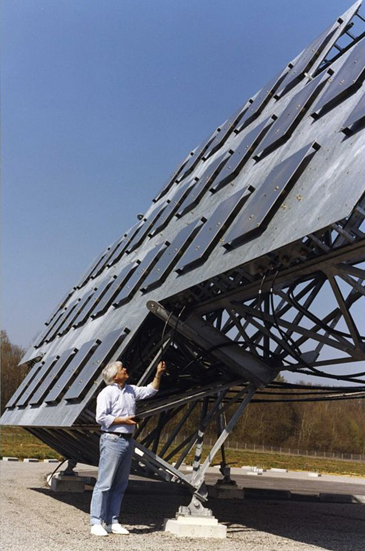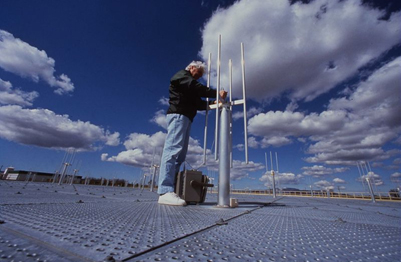GRAVES, the 1st European space surveillance system
Developed by ONERA in the 2000s, the GRAVES system makes it possible to track and catalogue more than 3000 space objects in low orbit on a daily basis.
|
Discover the GRAVES model and immersive VR animation at the ONERA stand at Bourget Hall 2A - booth C271 and meet its experts. |
Only the United States, Russia and China have this capability, providing them with a major strategic advantage. GRAVES allows France to obtain independent information on the space situation as well and therefore to discuss on equal footing with the major space powers.
ONERA is preparing its successor in order to meet the new challenges of the defence space.
A major strategic asset
 Launched in 2005, the GRAVES (Grand Réseau Adapté à la Veille Spatiale) Space Surveillance System detects objects in low orbit, at an altitude between 400 to 1000 km. It consists of a fixed radar system, deployed over two sites, that observes targets moving across the sky.
Launched in 2005, the GRAVES (Grand Réseau Adapté à la Veille Spatiale) Space Surveillance System detects objects in low orbit, at an altitude between 400 to 1000 km. It consists of a fixed radar system, deployed over two sites, that observes targets moving across the sky.
The emission site emits an electromagnetic wave on a single, pure frequency.
At the receiving site, the detection of return radar waves exploits the Doppler effect: the speed of the satellites induces a frequency variation in the wave they reflect.
Once the useful signal is extracted using specialised signal processing, we obtain analysable angle information and observation speed of the visible satellites.
Using this information transmitted to the Lyon Mont-Verdun Air Force base, a catalogue containing the orbits of detected objects is automatically compiled by a powerful calculator. Based on these, the French Air Force can predict at any time the position of all satellites being monitored, in particular their passage over French territory but also over foreign operational territories.
In the near future, there will be improvement in performance thanks to the ongoing renovation work. The renovation mainly involves work on the receiving antennas and the signal processing, supported by a new computer that takes advantage of current computational capabilities.
The changing context
The space environment is changing rapidly: arrival of new private and public actors, increase in the amount of debris in orbit, miniaturisation of satellites, proliferation of constellation projects, aggressive and potentially malicious manoeuvres against our satellites, etc. It is therefore more necessary than ever to preserve and strengthen space surveillance in order to ensure the security of space facilities and associated capabilities.
It is crucial to have up-to-date knowledge of the satellites crossing paths in space, their actions and their owners.
Renovation of Graves
 ONERA is currently renovating the GRAVES system, as part of a contract for the DGA (Direction Générale de l'Armement), under a co-contracting arrangement with the company DEGREANE HORIZON. The objective is to guarantee operation until 2030 while improving certain aspects of performance.
ONERA is currently renovating the GRAVES system, as part of a contract for the DGA (Direction Générale de l'Armement), under a co-contracting arrangement with the company DEGREANE HORIZON. The objective is to guarantee operation until 2030 while improving certain aspects of performance.
In order to prepare for the future, ONERA has designed a new system that will make it possible in the longer term to see smaller objects further away.
To detect smaller and smaller satellites, the GRAVES’ successor will have to rely on a higher detection frequency in the UHF domain.
Other complementary systems
In addition, as has already been demonstrated with GRAVES in experiments, the system will be able to use more precise sensors to make detailed observations of objects of particular interest. Thus, a synergy should be found between an imaging telescope using adaptive optics and an optical imaging technique that enables correction, thereby eliminating disturbances related to atmospheric turbulence. ONERA has expertise recognised worldwide in this field. This telescope with adaptive optics will provide detailed images of certain objects in order to better understand, identify and characterise them.